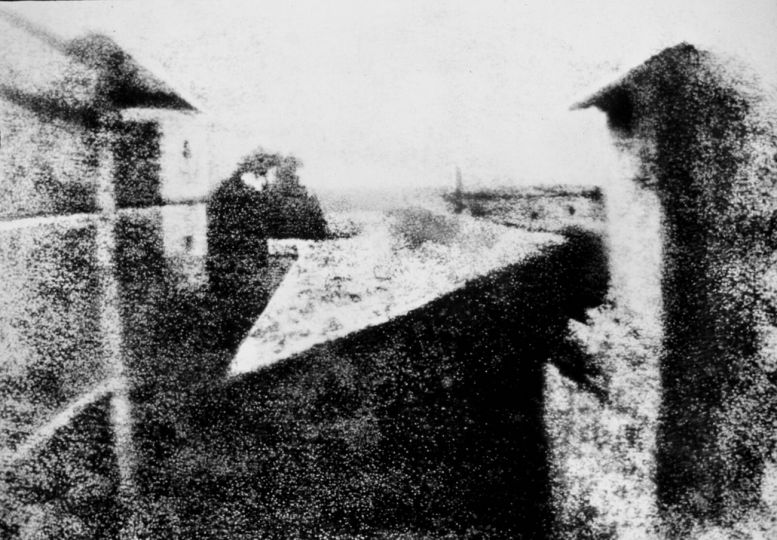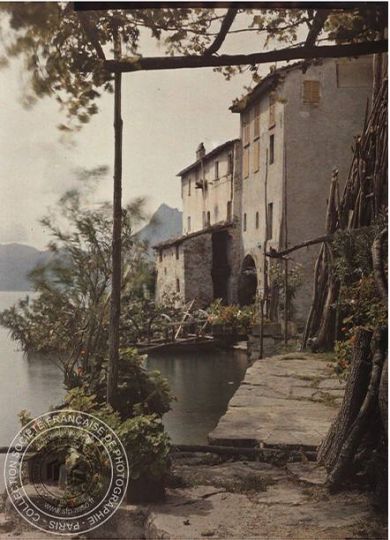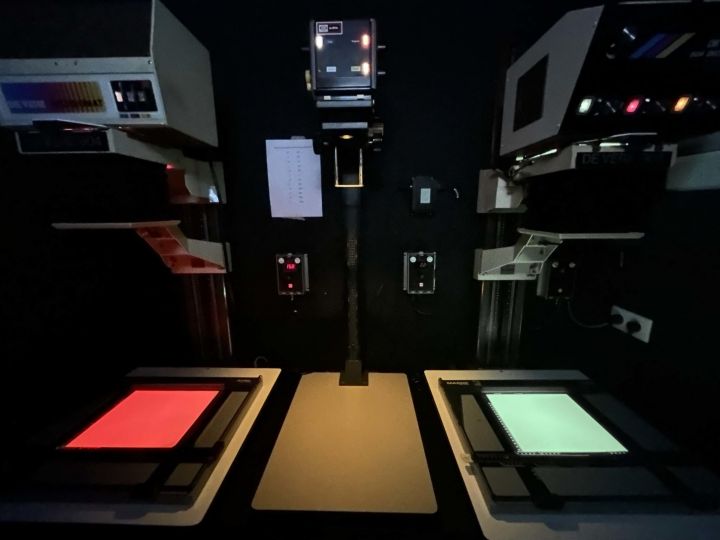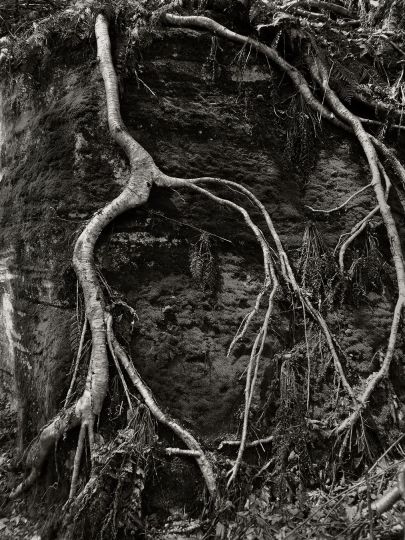After fifteen years of unrelenting work for the recognition of Russian photography, the passionate founder of the Multimedia Art Museum of Moscow talks about her taste for art.
(Moscow, interview by Armelle CANITROT)
“Our museum’s mission is to give people the possibility to travel to the past and to the future”. A fascinating woman, Olga Sviblova – the “Miss Russian photography” – has at last opened the doors to the Multimedia Art Museum of Moscow (MAMM), ending a five year construction ordeal often jeopardized by changes in architects, structural defects, the economic crisis and uncertainty from local elections.
A Bolshoi worthy silhouette and an elegant chignon, with grey eyes underlined by rectangular shaped glasses, Olga Sviblova is dressed in black with an extreme yet simple refinement. She wears one watch set for Moscow time and the other synchronized with her husband in Paris. Hers is a femininity that extends even to the tip of her incessant slim cigarettes, a strange mix of fire and ice, of strength and fragility, of kindness and firmness, and with an extremely unique way of mixing natural with sophistication and excessive Russian sentimentality with wisdom. She is, according to those who surround her, “seductive and sharp, gifted with a stunning intelligence and energy”. Excessive and a visionary, her work is strikingly coherent. After fifteen years and 3,000 exhibitions in Russia and abroad, she continues her fight for the recognition of photography as an art, teaching the public and supporting her country’s artists. Organized around two alternate biennials, numerous prizes, and nourished by a collection of 82,000 works, her exhibitions have stressed both Russian and international photography, from great masters such as Rodchenko to young Russian artists as those from the “Camera d’argent” prize, currently exhibited in the Moscow Manege.
She manages to hide the fact that she has worked until 4 AM for her upcoming exhibition on “Gorbatchev”, with one cell phone in each hand speaking to her husband while solving thirty-six problems in the back of her chauffeured-car, made available by a museum sponsor. Because if she is devoted heart and soul to the public cause and her museum is sponsored by the city of Moscow, scouting for patrons of the arts and sponsors is a must. And it’s thanks to her husband’s support, a French insurance broker for works of art, and her faith in the Russian proverb “Better to have a hundred friends than a hundred rubles”, that she has been able to place her craziest bets. In a country stricken by a fever for consumerism, she has decided to mix unsettling art with glitter. The biennial “Fashion and style” is a pretext to finance her exhibition on conflict. “I sell Bettina Rheims in order to be able to exhibit Sebastiao Salgado. Photojournalism must be helped, otherwise, there will be no more history. Photography allows us to question the present and the future”. In order to defend her most ambitious projects, the very charismatic Olga takes to the stand to convince any oligarch about the importance of investing in art and culture for their own personal benefit. Soul searching? “I’ve learned that a part of life was to take it as a theater, but in every person there’s a basis of humanity whose key I must find in order to spread the message”
Magnificent volumes of space, impressive lighting and impeccable hanging: the new museum opens with six exhibitions revealing the talent and the educational concerns that drive its founder. The images of the much talked about Simon de Pury are side by side with those of Georgy Petrusov, master of Russian modernism spanning from 1920 to 1950, or the Photoalbum by Alexandre Budberg, a history on world photography commented by the Russian critic from a historic, aesthetic, social and politic perspective. “Less intimidating and less expensive than art books, articles by journalists are our magic lenses that bring a voice to mute images”, says the director. Whereas the versatile images from “Fluxus”, “The Electric Nights” and the MAMM’s multimedia collection remind her that “Art has always dreamt of interactivity and going beyond its limits, all the while contributing to a questioning of the world”. Taking into consideration the evolution of photography, immensely surpassing its boundaries, and the fruitful path that she has walked with her public, Olga Sviblova dedicates this museum to contemporary art, and to Internet and digital art.
Proud to open the first Russian museum equipped for a handicapped public, Olga Sviblova stresses her commitment to her four-year-old educational program for orphans and the handicapped. “Thanks to the camera we can teach them to communicate, to widen their vision, to make them feel more a part of the world”. She maintains a remarkable faith in the virtue of work and education, in the strength of culture and art. “I’ve had the chance to have had teachers that cultivated our individuality, stressing that the collective and human values were a priority, and that to create was more important than to earn money”. Those are the values that she’s committed to teach her students in her Rodchenko Photography and Multimedia School, founded in 2006, known for its ateliers and its handicapped tours.
“I condemn your lack of imagination”, her father had replied when she expressed, during Yuri Gagarin’s heroic achievement, her absence of interest to fly into the cosmos. Born in the ‘50’s to an intelligentsia family, her mother was a German language teacher and her father a successful aeronautical engineer. As many of her compatriots, she lived in a 14-square meter room, in an apartment shared with 12 other families that belonged to one of the grandfathers. After her PhD in psychology of the arts on “The Metaphor as model to the creative process,” the young Olga worked for a long time as a street sweeper along with her first husband, a Russian poet and the father of her child. Director of Carré Noir (Black Square), a documentary on “underground” art that received the Cannes Film Critics prize in 1990, she was also the art curator for the Russian pavilion in the Venice Biennale in 2007 and 2009.
It’s not always easy for her 200 collaborators to keep up with her – this hyperactivity has a price. A couple torn between Moscow and Paris, severed with trips around the world and some isolated moments returning to the roots in their floating dacha in the middle of the unconstructible Camargue. “Too bad if the nights are the only available moments to set up the exhibitions, because when the message is received by the public, I forget the bad moments” she says. “I remember all the exhibits, all the books that have transformed me. Art offers discoveries that we could never experience ourselves. When I’m passionate about a project, I can’t help but share it. I am proud of our 40,000 visitors and I hope that I can help them learn to feel, to question themselves, to react. I don’t know if beauty will save the world, but it might help to keep our eyes open”.
Armelle CANITROT, Critique et Chef du Service Photo du quotidien La Croix, January 21, 2011















